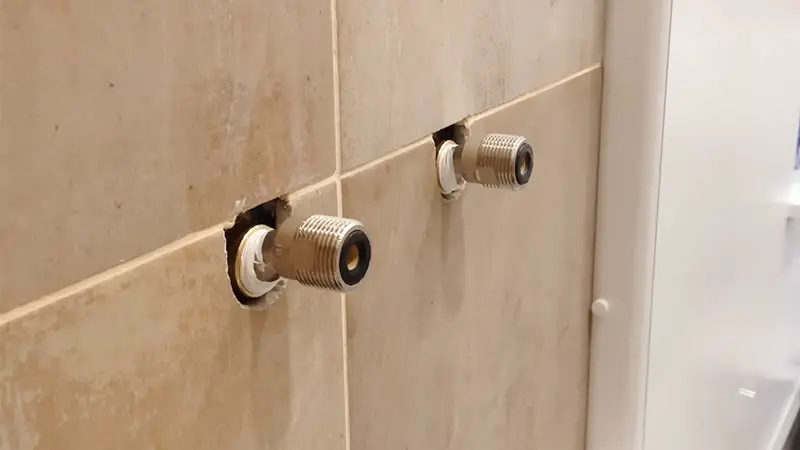The size of the pipe for the shower supply depends on various factors, including the water pressure requirements, local plumbing codes, and the number of fixtures connected to the same water supply.
In most residential settings, 1/2-inch pipes are commonly used for shower supply lines. However, it’s essential to consider the specific requirements of your plumbing system and the fixtures involved.
If you have multiple fixtures connected to the same water supply, you may need larger pipes to ensure an adequate flow of water to each fixture.
Additionally, local building codes may dictate the minimum pipe size required for different applications.
It is common for shower supply pipes to be ½ inches in diameter. It is, however, possible to attach a ⅜ -inch pipe, a ½ -inch pipe, or even a ¾-inch pipe.
The smaller the pipe diameter, the less water is wasted, but the larger the diameter, the more water is wasted, and the more pressure is used.
You must choose the appropriate pipe size for your shower before repairing or installing new supply lines.
Pipe size affects pressure, and factors that determine pipe size are explained here, in addition to why oversize pipes shouldn’t be installed.
Determining The Right Size Pipe For Shower Supply
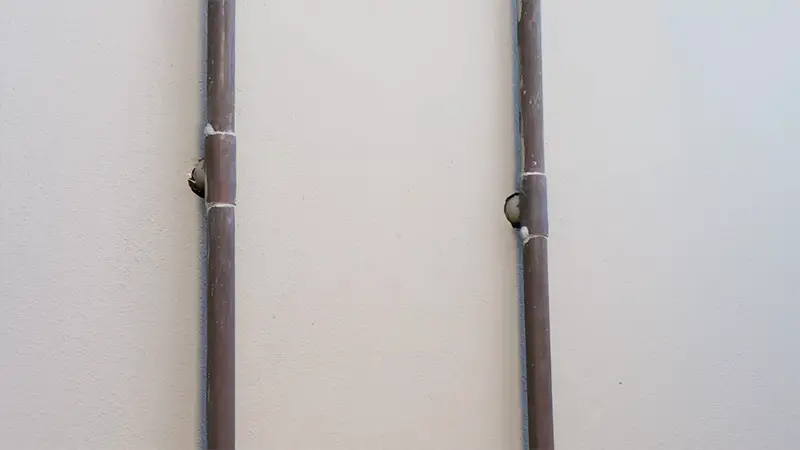
There is a common size of ½ inch for shower supply pipes. The shower has two water lines, one for hot water and another for cold water. The flow rate and temperature of the water going to the shower head are controlled by a valve.
Typically, bathroom supply pipes are ¾ inches in diameter. As you can see, this supply is connected to a ¾ inch pipe.
The size of the shower supply pipe affects the flow and pressure of the water into the shower head. Water flow rates increase in a large pipe, while less water flows in a small pipe.
Most homes over 50 years old or renovated still use copper or galvanized steel pipes for the shower supply line. However, PEX pipes, aka cross-linked polyethene, are the preferred plumbing pipe in modern times.
A number of advantages exist for PEX, including its flexibility, cheapness, and ease of use. The easiest way to determine the supply pipe size for showers is to check a plumbing pipe size chart.
The chart provides the recommended pipe sizes for you based on several factors, so you never have to calculate them manually.
Depending on the water-saving measures taken, the pipe size of the shower supply may have to be changed.
Compared to a ¾” pipe, a pipe of ½ inches will waste less water since it reduces water flow. The shower, however, will take longer if the supply pipe were ¾inches in diameter.
Three PEX pipe sizes are available: ⅜ inches, ½ inches, and ¾ inches. Using a ⅜ inch PEX supply is a good choice to save as much water as possible while showering.
Compared to PEX pipes, copper pipes have a larger inside diameter. Replace copper pipes with PEX pipes of greater diameter if you want to save money. For example, a ½ inch copper pipe will be replaced with a ¾-inch PEX pipe.
Effect Of Shower Head On Shower Supply Pipe Size
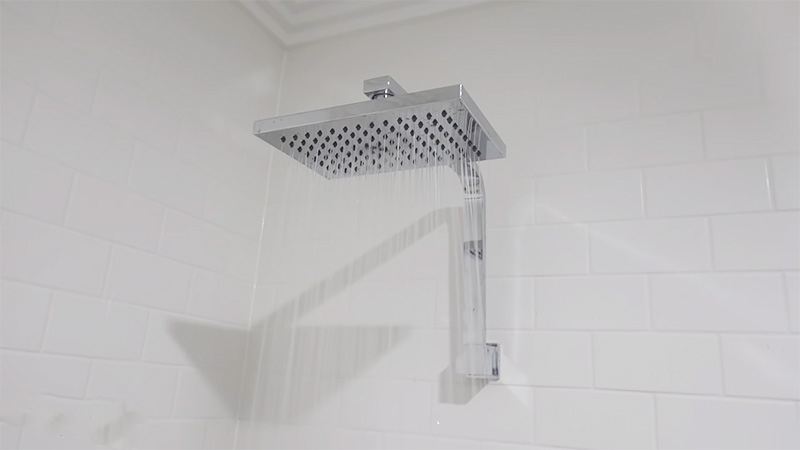
Many shower options are available with different pressure and volume requirements, depending on what you need. There is an array of shower head options, such as double shower heads or even water jet shower heads.
Rain shower heads usually measure 6 to 12 inches wide. Water sprays at a rate of 2.5 gallons per minute, creating the impression of rainfall.
A larger diameter pipe for rain shower heads produces a weaker spray than a smaller one when using the ½ inch pipe.
Generally, double shower heads have fixed and handheld shower heads. Having both on simultaneously gives you 1.25 gallons per minute for each since the flow rate is typically 2.5 gallons per minute.
If you have a larger shower supply pipe, you will be able to enjoy both heads at once and increase your flow rate.
The water is passed through several small jets attached to the wall to reach every part of the body. To perform effectively, showers require a large amount of water, so it is best to have a larger shower supply tube.
In most cases, a shower supply line has a diameter of ¾ inches and a diameter of ½. Although there are different types of showers, they require different water flows and pressures.
The ½” pipe combined with a ½” rainfall shower head results in weak spray compared to a 6-inch shower head. As a result, when comparing ¾” vs ½”, the shower head’s flow requirements determine what to choose.
With a 12-inch shower pipe, a typical shower head will fit perfectly. If your shower pipe is large enough to accommodate a rainfall shower or water jet, then you will need a ¾” inch pipe.
What Factors Affect Pipe Size For Shower Supply?
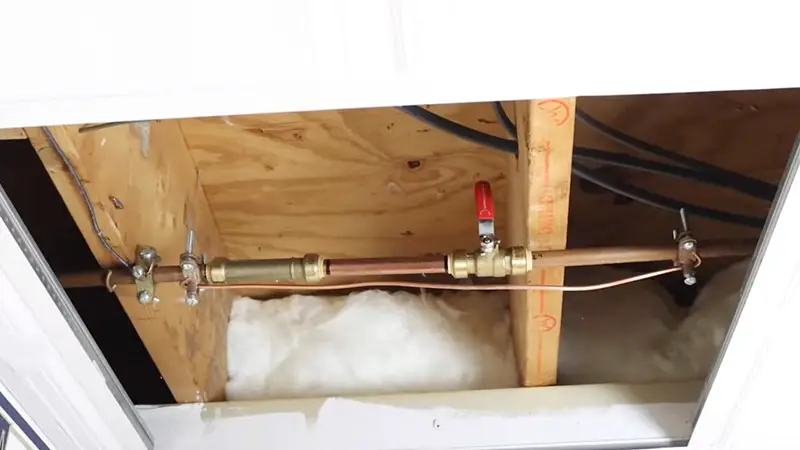
A standard house supply pipe has a diameter of ¾ inches. Typically, this pipe size is downsized to ½inches in diameter when supplying individual components like sinks and showers.
A number of factors must be taken into consideration, including the elevation and pressure, when determining the pipe size.
Elevation
One foot’s rise in elevation will cause water pressure to drop by approximately 0.5 psi. You can estimate the pressure drop by calculating the vertical distance between the shower fixture and the house water supply.
Distance From The Housing Supply
This measurement is between the house supply pipe and the shower outlet. Calculate the distance from the water meter to the shower head, including horizontal and vertical pipes, for precise measurement.
Pipes with a larger diameter are less flow-efficient than shorter pipes with the same diameter. In this case, you may need to adjust the pipe size if the shower is situated far from the housing supply.
Number Of Fixtures
How much water you’ll need for your bathroom depends on how many fixture units there are. The plumbing manual has a fixture value and the corresponding pipe size for each fixture.
What Happens If Shower Pipe Is Oversized?
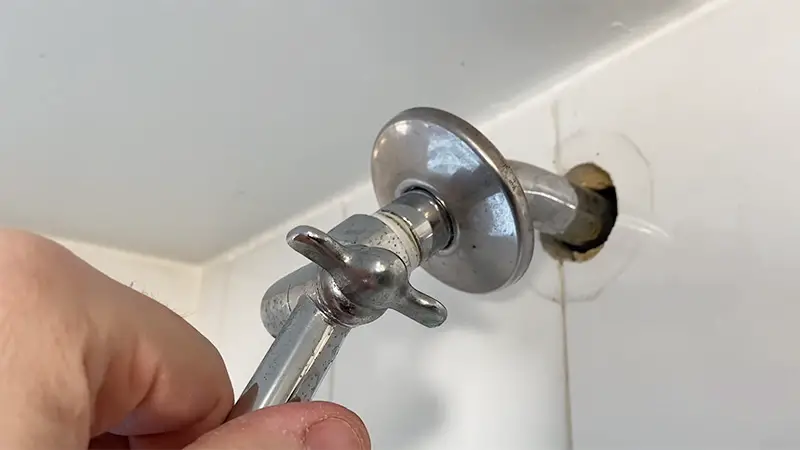
When the shower pipe is larger than the supply line, the water pressure towards the shower structure will increase.
As the shower structure is enlarged, more water will flow through it at a higher pressure. It will break whenever a shower fixture is not designed to handle strong water pressure and high volume.
Water flow will be higher if a shower pipe is oversized than the standard ½ inches. As a result, when hot and cold water is being used simultaneously, the hot water will take longer to reach the shower if the pipe is large.
Does Shower Pipe Size Affect Water Pressure?
It is true that shower pipe size directly affects water pressure. According to Bernoulli’s principle, water pressure decreases through a small pipe and increases through a large one.
The speed of the water increases as it flows from a large pipe into a smaller pipe. Due to this, the water molecules do not interact very much with the pipe walls, causing a pressure drop.
As water molecules are slower in a longer pipe, the pressure is greater because they collide with the wall of the pipe.
Therefore, low water pressure will result if your shower pipe size is smaller than your shower supply line. It follows that if the shower pipe size matches up with the supply line, there will also be an equal amount of water pressure.
Water pressure drops with every foot that a supply pipe rises above the water supply. The water pressure for a shower should be the same, regardless of where it is situated.
Therefore, pipes supplying the third floor are larger than those supplying the ground floor so that pressures remain equal.
To ensure you are using the right pipes for your shower, use the plumbing pipe size chart when doing repairs or installations.
Final Words
Whether you are a homeowner, plumber, or just an enthusiast of plumbing, learning the intricacies of pipe sizing for shower supplies will prove invaluable.
Understanding the principles discussed in this guide can help you make better decisions, troubleshoot problems more effectively, and ensure that your shower system works as intended.
Since most water supply and shower head pipes are designed to fit easily together, updating your shower supply lines or adding a new shower head is a quick and easy project.
In addition to pipe sizes and threads, the NPT has standardized length measurements for other plumbing fixtures in your home.

